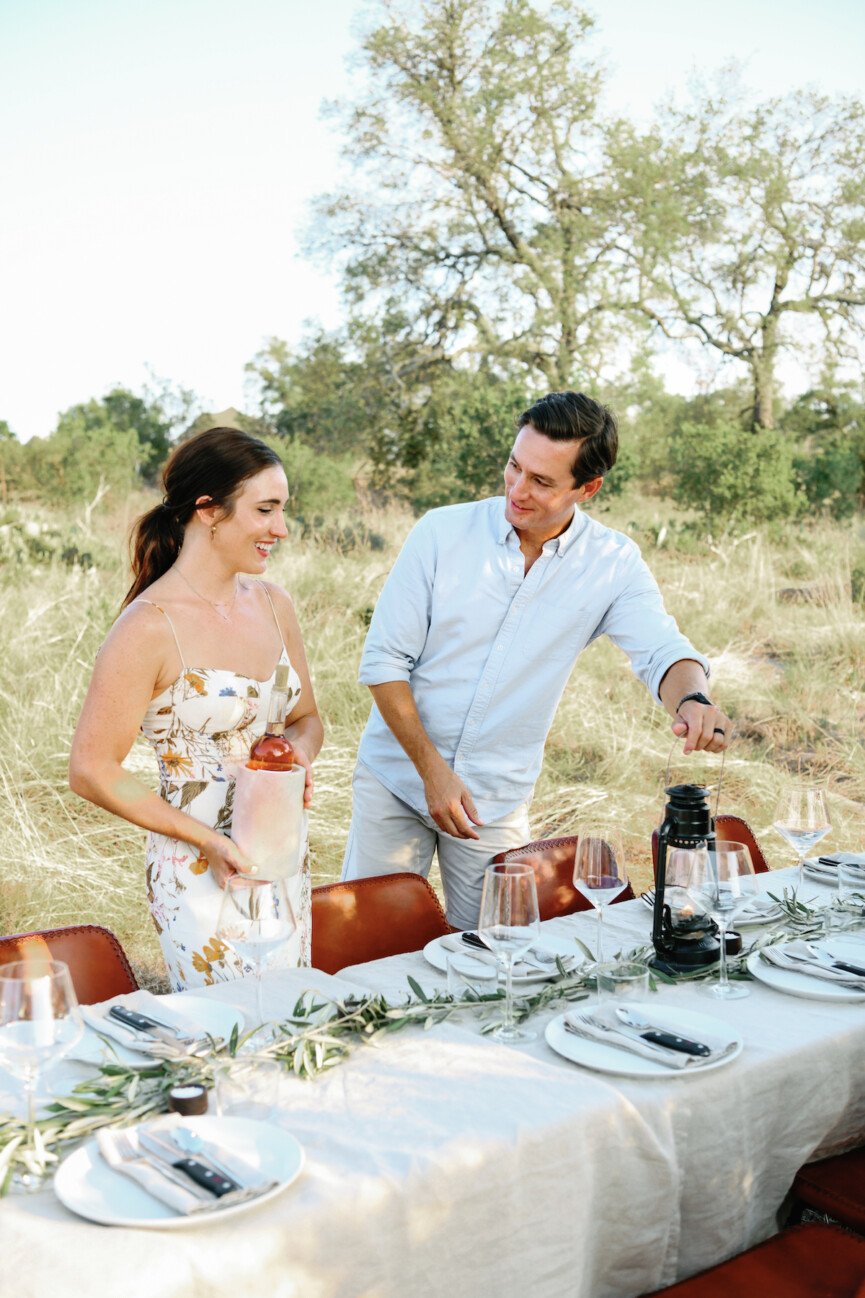My husband doesn’t really care when I dutifully report to my daily cleaning apps to keep a tidy home that serves our family. It matters not to him if I meal plan at the beginning of the week to take the guesswork out of dinner. But when we sit down to discuss our schedules, our kids, how we’re feeling in our relationship, and so many more things in our weekly marriage meeting, he is totally invested. Just last night, I swear he was batting eyes at me as we sat on the couch, discussing our future plans.
If you’re at all familiar with the five love languages, chances are you just guessed mineâand most certainly, his.

Understanding Love Languages
Knowing your primary love language is just the first step. Mine is acts of service; his is quality time. And while he does appreciate the small things I do to keep our home running smoothly, those arenât the actions that make him feel the most loved. Thatâs where the second step comes in: learning to speak your partnerâs love languageâaka, your “secondary language.”
What are the five love languages?
The five love languages, as introduced by Gary Chapman, Ph.D., in The Five Love Languages: The Secret to a Love That Lasts, are different ways we give and receive love:
- Physical Touch
- Quality Time
- Gifts
- Words of Affirmation
- Acts of Service
Chapman developed this framework through years of marriage counseling and studying how people communicate love. Understanding your love language and your partnerâs can unlock a deeper connection and make both of you feel more valued in your relationship.
Why Knowing Your Love Language Matters
We all want our partners to feel loved, but Chapman takes it a step further: When we feel fully loved, our potential expands. When your “love tank” is full, youâre more confident, motivated, and emotionally secure.
When we speak our partnerâs love language, we foster a relationship that thrives beyond the initial “honeymoon phase.” Chapman suggests that the âtrue loveâ phase typically lasts about two years. When you first fall in love with someone, you’re more likely to speak your love loudly. Staying up all night on the phone, holding hands in public, dropping by surprise gifts, booking weekends away, and more. It’s hard to decipher what truly makes you feel loved when you’re on the receiving end of all of it.
After that, intentional love takes overâthe kind that sees, sacrifices, and stays consistent. That’s when the good stuff happens, a rich well of deep love that goes beyond the butterflies.
Love languages can be a valuable tool to get you to that next phase.
How to Find Your Love Language
If youâre unsure of your love language, take the official quiz online. But quizzes arenât the only wayâpay attention to what makes you feel most appreciated and valued. Do you light up when your partner spends uninterrupted time with you? Do small gestures mean the world to you? Observe yourself to understand which love language resonates the mostâa similar approach to truly understanding another powerful too, your Enneagram number.
Most people have a primary and a secondary love language. While you might resonate with more than one, chances are one will feel the most meaningful.

Love Languages Explained
Letâs break down each love language and how to use it effectively in your relationship.
Quality Time
If quality time is your love language, you feel most loved when:
- Your partner looks you in the eye and truly listens when you speak.
- You get to spend uninterrupted time togetherâwhether itâs a walk, a dinner date, or a weekend getaway.
- Your partner engages in activities you enjoy.
How to show love to a partner who values quality time:
- Give them your full attentionâput away distractions.
- Schedule regular date nights or quality conversations.
- Plan an activity you know theyâll love.
Start small by giving them your full attention when they’re talking. If you can’t give them your attention, let them know you want to be fully present and you just need x-amount of minutes to wrap up what you’re doing.
Take it a step further and schedule a date night or put a weekend getaway on the calendar. Even better if it features an activity (walking, painting, watching football, etc.) that you know your partner enjoys.
Gifts
If gifts are your love language, you feel most loved when:
- Your partner brings home a thoughtful souvenir from a trip.
- You receive a handwritten note or a small token âjust because.â
- Unexpected gifts make you feel seen and appreciated.
How to show love to a partner who values gifts:
- Pick up their favorite coffee or treat on the way home.
- Surprise them with small, meaningful presents.
- Give gifts that reflect thought and effort, not just expense.
It’s important to debunk the idea that a gift-lover is selfish or vain. For the person whose love language is gifts, the driving force is the idea that you thought of them or considered them. And that’s exactly where to start small: think of the person you love the next time you’re at the grocery store or on a walk. Grab their favorite chocolate bar at the checkout or pick a flower for them on the way home. Gift-giving doesn’t always need to be a grand gesture.
Take it a step further by showing your appreciation more regularly, not just for special occasions. Challenge yourself to give your partner a gift every day for a week and just see what happens.
Words of Affirmation
If words of affirmation are your love language, you feel most loved when:
- You receive genuine compliments and encouragement.
- Your partner expresses appreciation for what you do.
- A simple âI love youâ or âIâm proud of youâ brightens your day.
How to show love to a partner who values words of affirmation:
- Offer compliments and encouragement regularly.
- Express gratitude for both big and small things.
- Leave love notes or send meaningful texts.
Start small by acknowledging to yourself that words matter more than you realize. Keep these thoughts on your mind and pay attention to how you use them. Begin by giving praise and complimentsâand then keep them coming.
Even though it might not come naturally to you, “words of affirmation” is a language you can learn. By offering encouragement and kind words regularly, you will feel more natural, and your partner will feel the love.
Acts of Service
If acts of service are your love language, you feel most loved when:
- Your partner helps with daily tasks without being asked.
- They take on responsibilities that ease your burden.
- Thoughtful actionsâlike running an errand or fixing something brokenâshow they care.
How to show love to a partner who values acts of service:
- Identify what tasks stress them out and offer to help.
- Take over a recurring chore to lighten their load.
- Anticipate their needs and act on them.
Start small by pinpointing the thing your partner complains about the mostâis it doing the laundry? Keeping a clean car? Paying bills? Offer to help or better yet, just do it.
Take it further by removing one ongoing task from your partner’s plate. Maybe it’s helping with the chores by owning all lawn maintenance or unloading the dishwasher every morning. Bonus points if you can take something they dislike doing. You’ll make them feel cared for by creating more space and room in their daily routine for doing things they love.
Physical Touch
If physical touch is your love language, you feel most loved when:
- Your partner holds your hand, hugs you, or cuddles.
- A simple touchâlike a hand on your backâfeels reassuring.
- Physical closeness strengthens your emotional connection.
How to show love to a partner who values physical touch:
- Offer hugs and kisses frequently.
- Hold hands while walking or sitting together.
- Initiate physical intimacy and affection regularly.
Start small by giving hugs just because. Grab your partner’s hand when you’re out in public. Steal kisses. Smack their butt.
Take it a step further by being the one to initiate sex. Learn what your partner likes (and what you like!) and don’t be afraid to show your love through physical affection.
Should you read The Five Love Languages book?
If youâre already familiar with the concept, then the book serves as a simple guide but may feel outdated in parts. Instead of reading, invest your time in applying the principlesâobserving, learning, and adapting to your partnerâs needs.

Can love languages change over time?
Unlike your Enneagram number, a person’s love language can change over time. Life’s changing circumstances can change the way we give and receive love, from different seasons to personal growth to our environments and how we move within them.
Here are a few reasons love languages may evolve:
- Big Life Transitions: Becoming a parent, moving to a new place, changing careers, or caring for a parent can all alter your emotional needs. Personally, acts of service soared to the top once I became a parent (and with it, my husband’s need for quality time).
- Healing Past Wounds or Evolving Emotional Needs: Working through trauma can significantly change the way we receive love. For example, someone experiencing insecurity, pain, or high levels of stress might value words of affirmation above all else. With time and healing, those needs can shift.
- Relationship Dynamics: As your relationship matures, so does your love. Check in often with your partner to see if any new preferences have developed. Make it fun by offering love in various languages and see which ones they respond to the mostâand vice versa.
It’s helpful to take inventory with yourself and your partner about once a year to help ensure that youâre both giving and receiving love in the most meaningful way.
Final Thoughts
Understanding and applying the love languages can transform your relationship. Itâs not just about knowing your own language but actively learning to âspeakâ your partnerâs. When both people feel seen and valued, love grows deeper, stronger, and more intentional.
This post was last updated on April 3, 2025 to include new insights.

